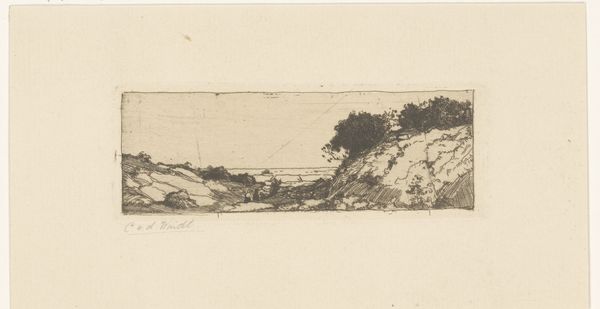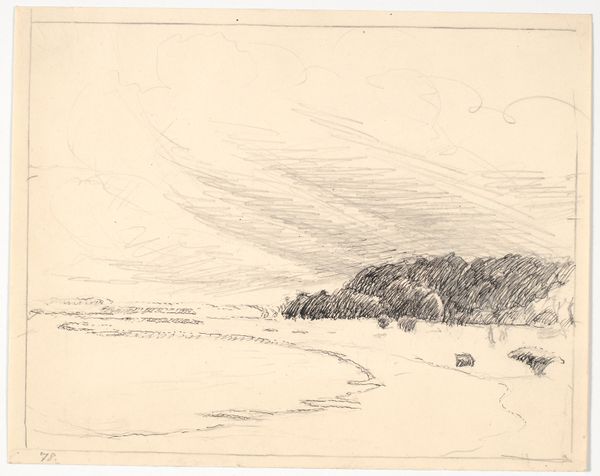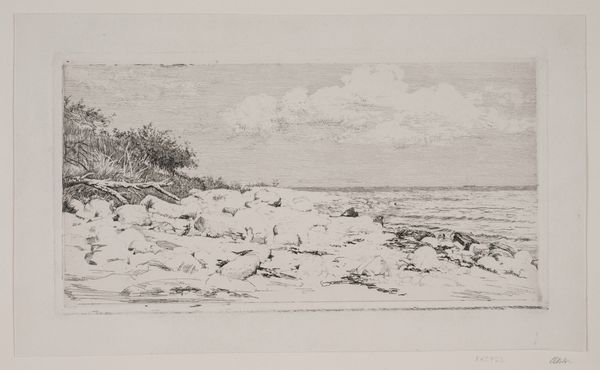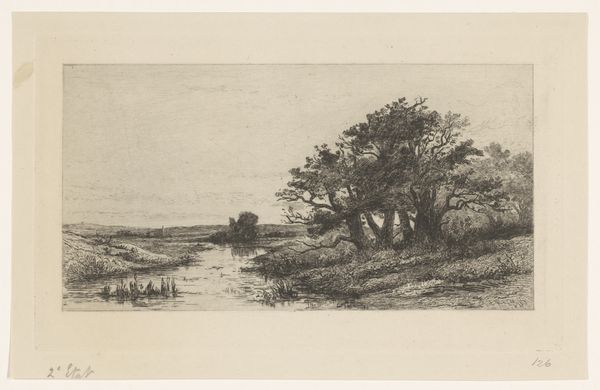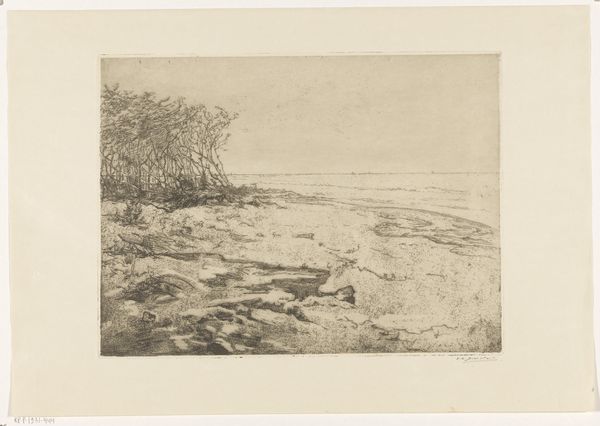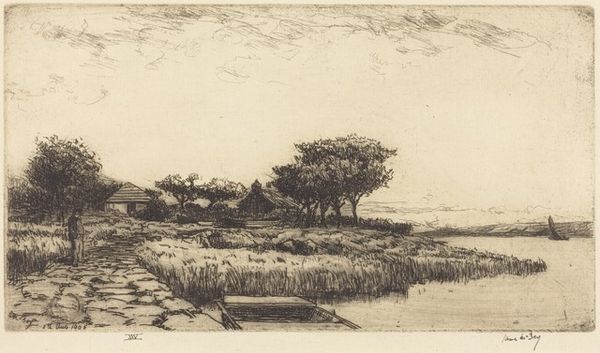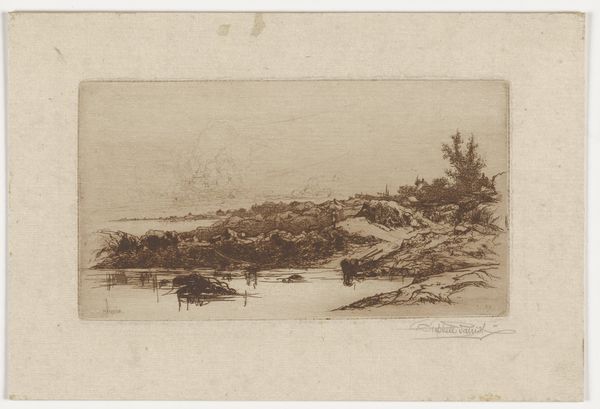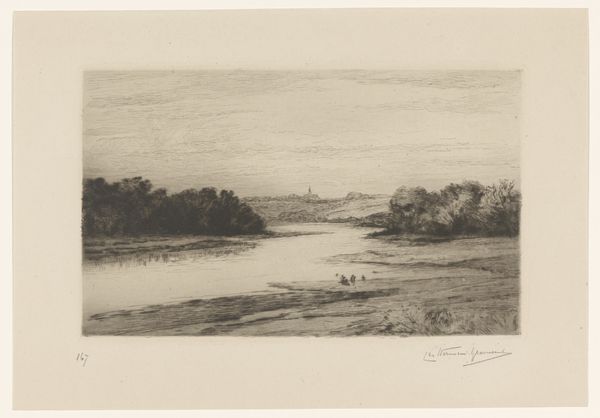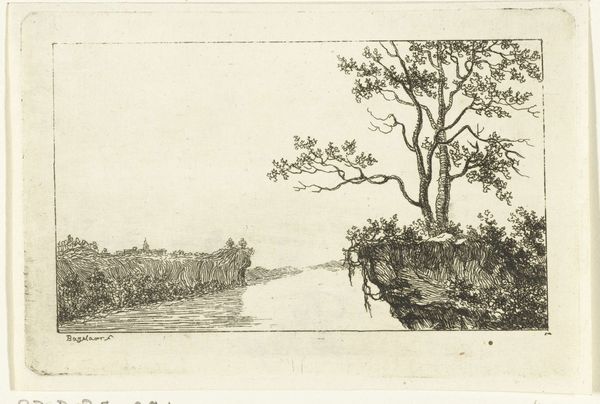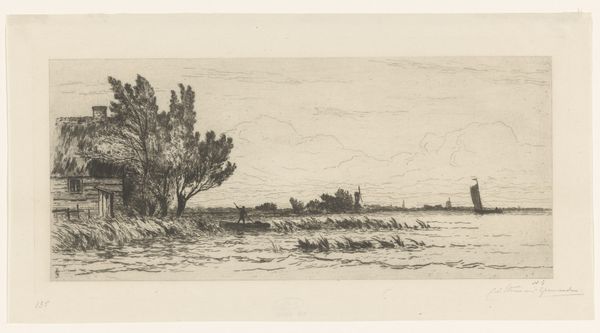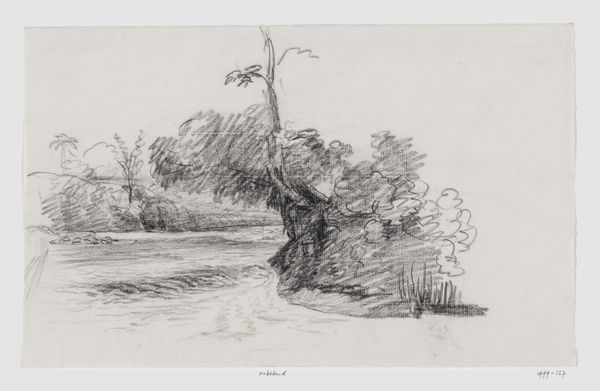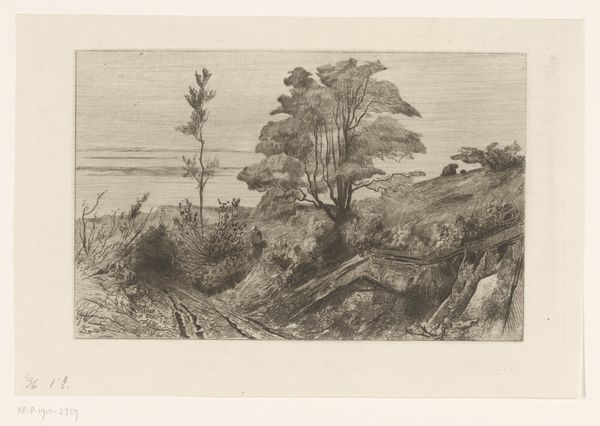
print, etching
#
ink drawing
# print
#
impressionism
#
etching
#
landscape
#
realism
Dimensions: 182 mm (height) x 306 mm (width) (bladmaal), 136 mm (height) x 265 mm (width) (plademaal)
Curator: Looking at "Skrænten ved Havet," or "The Slope by the Sea," a print crafted in 1883 by Carl Bloch and currently residing in the SMK, I am struck by its stillness. Editor: There’s almost a ghostly quality to the scene, a landscape rendered in these delicate, almost tentative lines. It evokes a certain melancholic atmosphere, doesn’t it? Curator: Yes, melancholic perhaps in its subdued palette, though I see it more as an attempt to capture the Danish coastline in its raw state. Bloch was operating within an artistic climate deeply influenced by realism and the rising tide of impressionism. How might the symbols usually tied to a seascape factor in, or perhaps be notably absent here? Editor: Traditionally, seascapes have carried rich symbolic weight—the ocean often representing the subconscious, the ship embodying journey, etc. Here, the etching technique itself downplays such narratives, moving toward an almost dreamlike rendering, focusing on feeling over explicit symbol. And what about that lone, skeletal tree, is it simply nature or does it signify something more profound? Curator: I am inclined to agree that it is rather focusing on this moment; what might easily be the view from the artist’s location. That bare tree, however, is hard to overlook. Consider the changing societal views around nature at the time—the rising romanticism, but also anxieties concerning man’s encroachment upon the natural world, with industry evermore looming over the horizon. The print almost certainly reflects these ideas about society's role and responsibility toward the environment. Editor: You're making me reconsider my initial reaction, especially thinking about environmental consciousness. The contrast between the scraggly tree and that almost pristine stretch of beach definitely does prompt reflection. It serves as a visual representation of nature's fragility in a changing world, I suppose. Curator: Indeed. The art engages with social questions through subtle symbolism, it’s not just about pretty scenery. The print's very medium – etching – places it in a democratic sphere, available to a wider audience through prints, reflecting the era's cultural accessibility aims. Editor: Right, it underscores how symbols shift meanings and aren’t always fixed—how historical context and viewing conditions drastically reshape our perception of any artwork, and perhaps our world itself. Curator: A perspective well worth embracing in approaching all art!
Comments
No comments
Be the first to comment and join the conversation on the ultimate creative platform.

